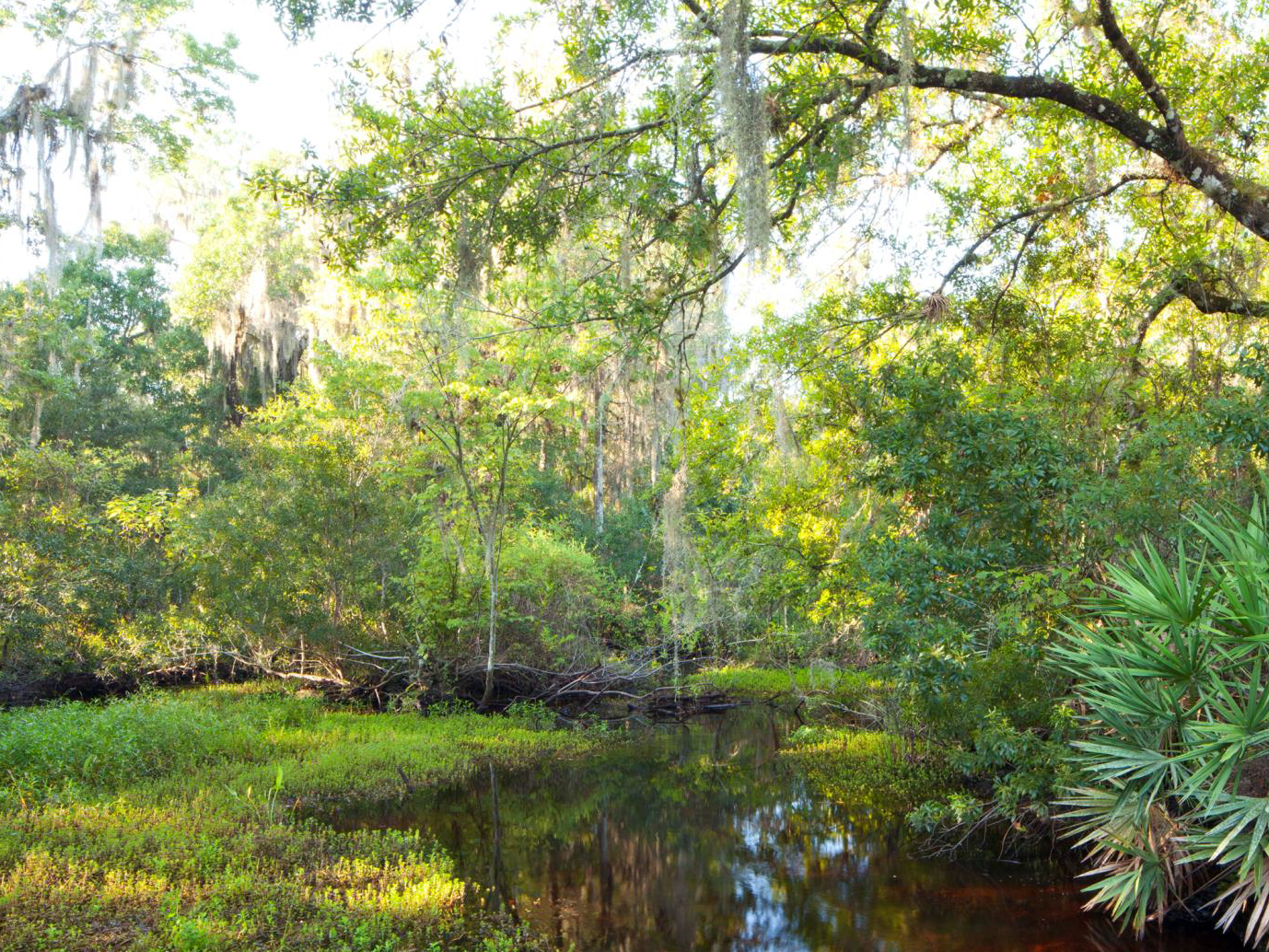
The concept of an “urban stream” might seem like an oxymoron, but restoration efforts across the state are proving that naturalized streams provide significant benefits even in densely populated settings.
For example, at Joe’s Creek in St. Petersburg and Phillipe Creek in Sarasota steep ditches are being restored to recreate meandering streams that improve both habitat and water quality, says John Kiefer, a water resources engineer at Wood Environment & Infrastructure Solutions.
“The trick is finding sufficient rights-of-way to allow the stream to spread out,” he said. “In many cases, even in urban cores, there is enough room.”
And those narrow ditches with steep sides aren’t just bad for fish and water quality, they’re expensive to maintain, Kiefer said. Rather than allowing rainwater to slowly flow through a more natural system, they cause flashes of freshwater that erode shorelines, move pollution quickly, destroy critical low-salinity habitat and require high levels of maintenance.
Restoring those deep channels to naturalized streams – typically within existing rights of way – allows the systems to process nutrients before they reach larger bodies of water like rivers, lakes and bays. Sediment has time to settle rather than increasing as soil washes away from eroding stream banks. Fish, including juvenile snook that need low-salinity habitat to thrive, respond quickly to the restored streams.
The primary goal at Joe’s Creek: stabilize steep banks
A true urban creek draining a densely populated 9,250-acre watershed before emptying into Cross Bayou in Seminole, St. Joe’s Creek’s sandy banks eroded easily in storm events. One of the options to control the erosion and lower levels of sediment was “armoring” the creek with concrete walls. However, research showed that a natural creek design provided more storage during floods at a comparable cost to concrete, Kiefer said.
At the same time, habitat values and recreational opportunities will increase, and water quality can improve substantially in the restored creek. And while that section of Joe’s Creek is not being restored specifically to remove nutrient pollution, it can be a highly effective way to control nutrients in streams that are considered impaired, Kiefer adds.
Phillipi Creek restoration improves water quality in Sarasota Bay
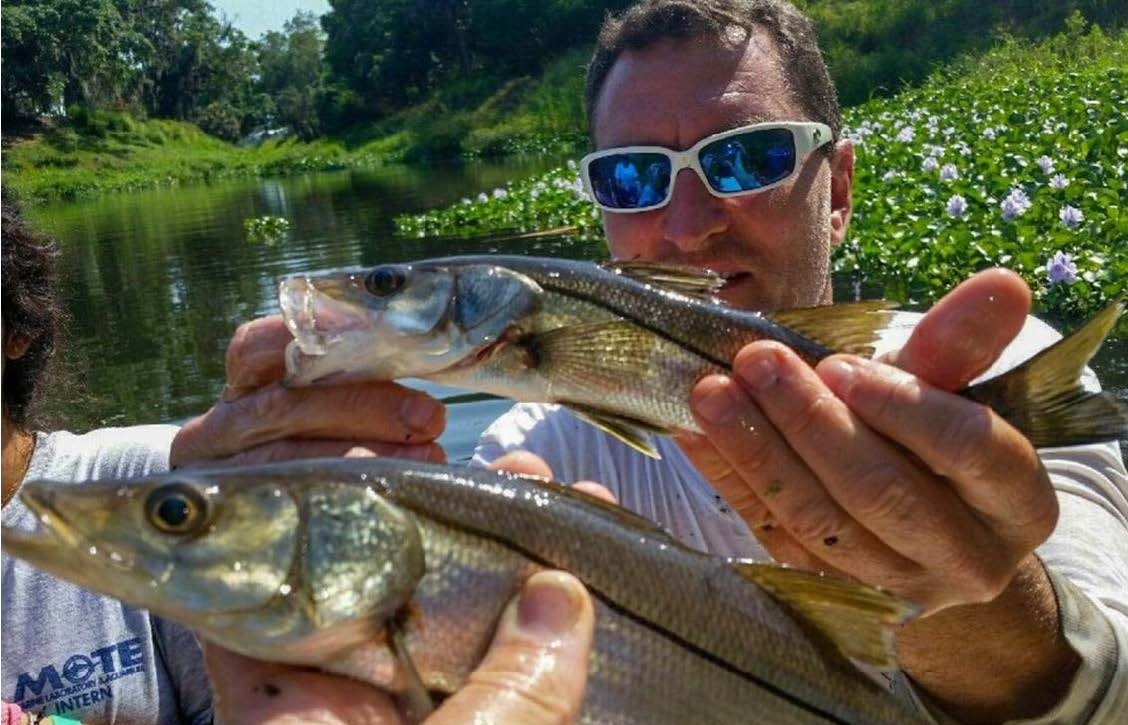
Once a typical coastal ecosystem with small ponds connected by slowly moving creeks, Phillippi Creek’s natural drainage system was destroyed when the watershed was developed, leaving more than 100 miles of very deep, fast-flowing canals moving water directly to Sarasota Bay. Stream banks were 15- to 25-feet deep and eroding daily; pollution from upscale residential neighborhoods impaired water quality in the bay.
When annual maintenance costs exceed $100,000 in some parts of the watershed, restoring canals to naturalized creeks can quickly repay the cost of restoration, Kiefer adds. “And that’s before you look at the positive impact of water quality improvements and enhanced habitats and fisheries.”
At first glance, Kiefer was skeptical of the feasibility of restoring Phillipi Creek because it would run through highly urbanized neighborhoods where additional rights-of-way wouldn’t be available. Closer inspection showed that it was 95% feasible.
The restored streams will not only improve water quality in Sarasota Bay but scientists from Mote Marine Laboratory found snook and bass thriving in pockets of the now-thriving creek that has also become an attractive feature in the surrounding neighborhood.
Edwards Bottomlands removes sediment, attracts visitors
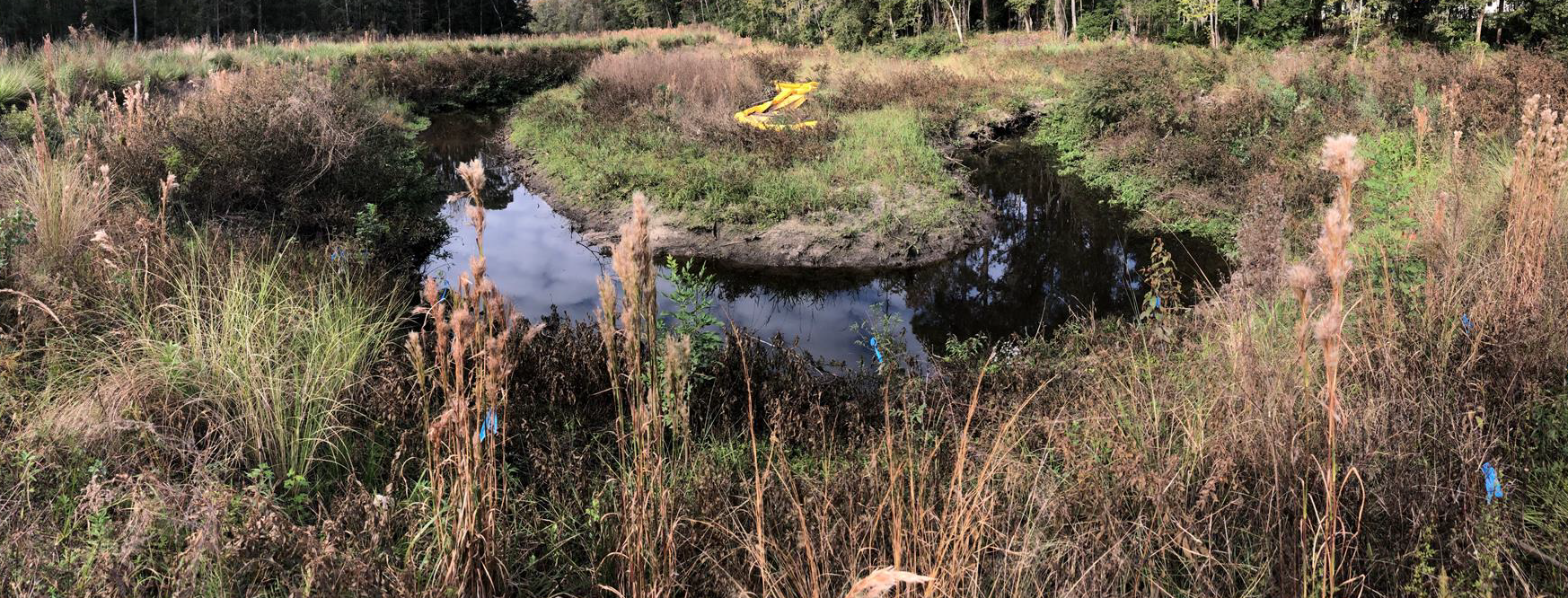
Alligator Creek through downtown Starke had been channelized in the 1930s and then dredged again in the 1990s to move rainwater through town quickly. That faster-moving water carried more sediment to Lake Rowell, where it was a cause for concern to the Florida Fish and Wildlife Conservation Commission.
Rather than armoring the creek with concrete or erosion-control fabric, restoring the stream to a more natural system was so successful that sunfish were found nesting there less than a year later. Over the past seven years, the tree canopy has grown over parts of the creek, resulting in what Florida Paddle News calls “a very interesting and surprising scenic treat to paddle,” instead of the previous barren drainage ditch.
McCoys Creek restoration to reverse decades-long flooding, pollution

Once commonly considered Jacksonville’s dirtiest waterway, McCoys Creek is now being called “downtown’s best-kept secret.”
Over the years, the once-meandering creek had been straightened and armored to move water quickly through the city’s industrial neighborhoods, but flooding was still an issue. “The solution had always been to build a bigger ditch but the neighborhood wanted something better,” Kiefer said.
Construction recently began on a $105.4 million project that will turn McCoys Creek back into a community amenity that will minimize flooding and improve water quality while creating neighborhood-friendly spaces, improving recreational opportunities and creating natural habitats that will attract fish and birds.
No restoration is the same as the last
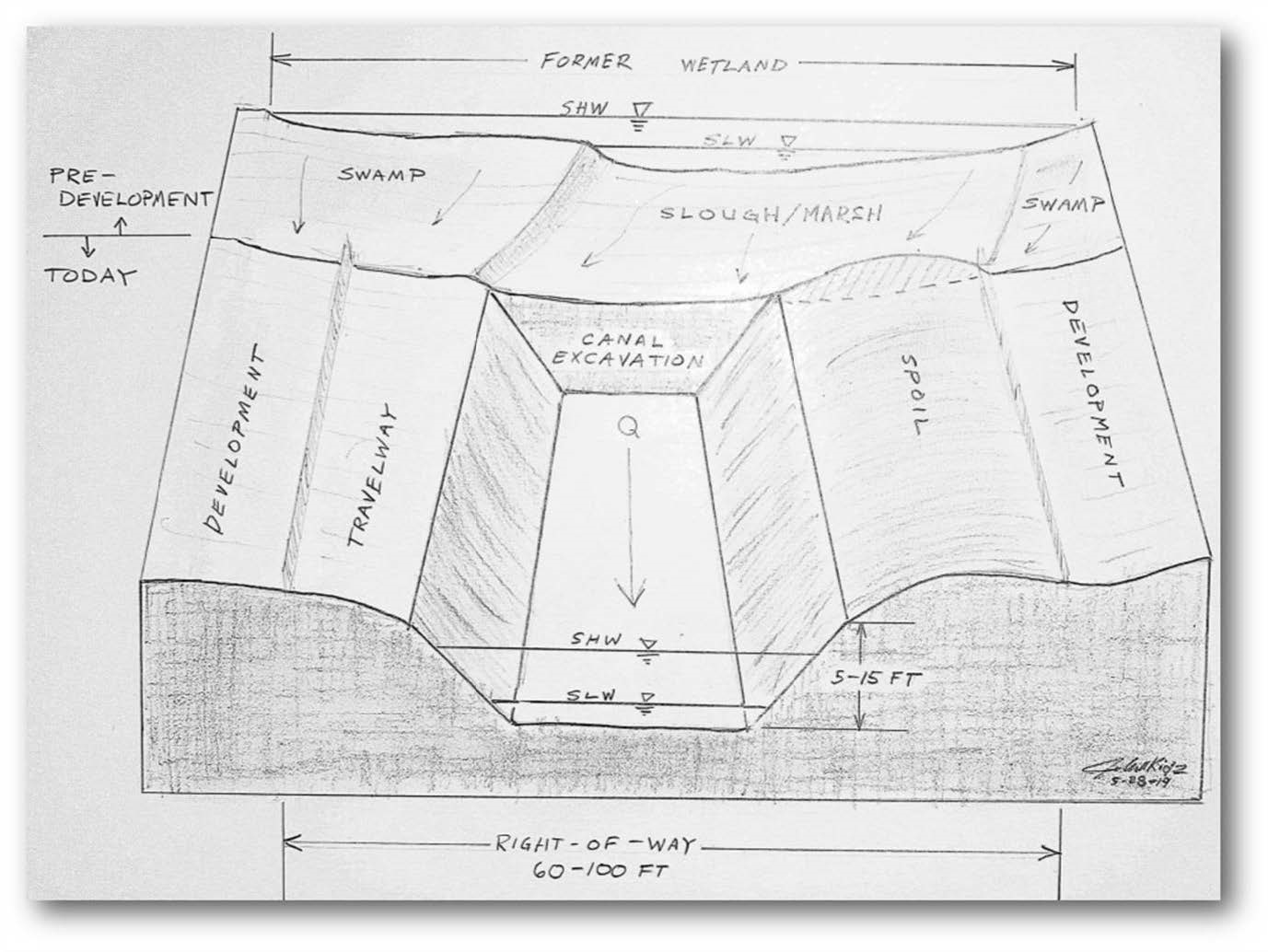
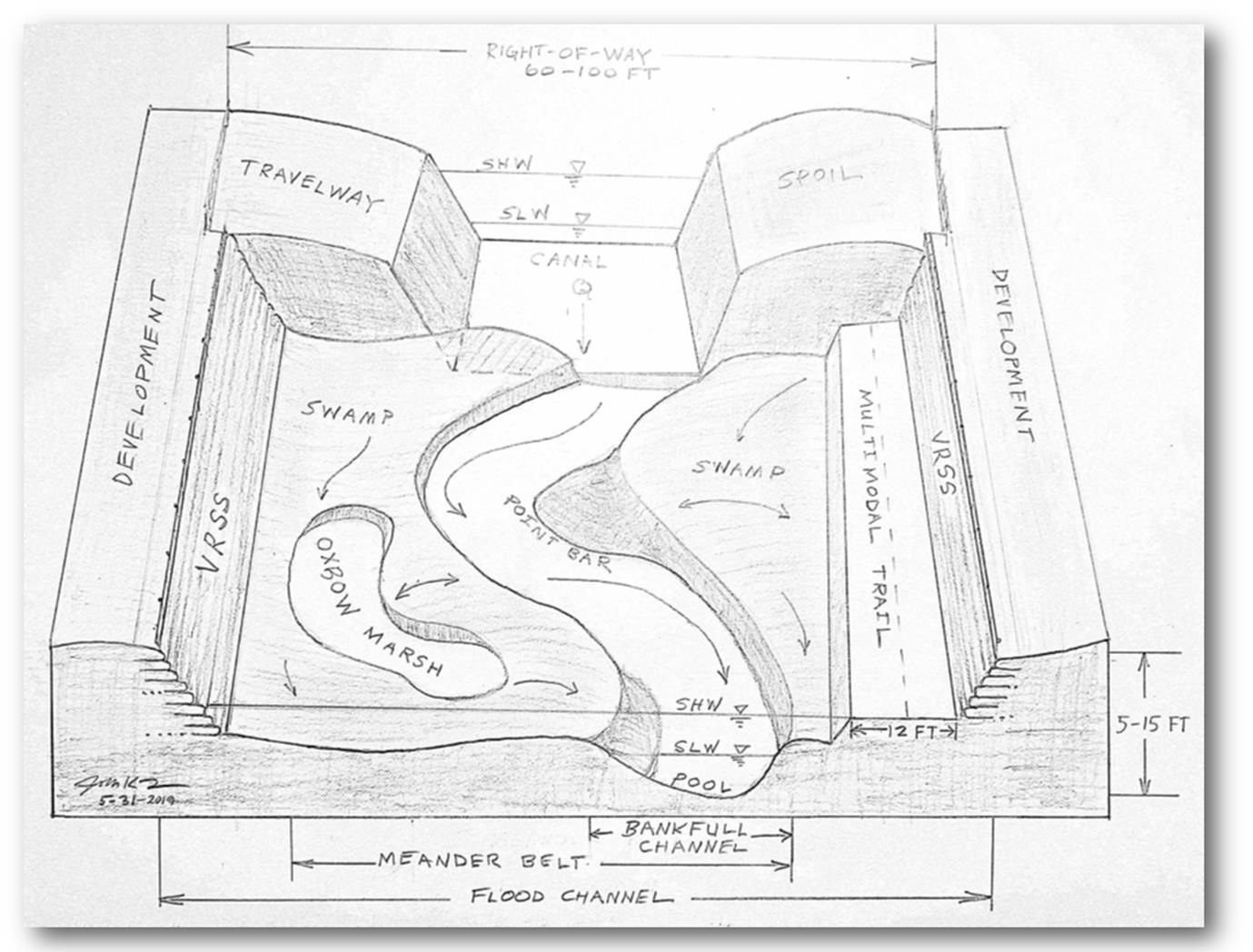 In every instance, having the necessary rights of way — or the budget to acquire them — is the first priority, but then every stream restoration is different based on the site, Kiefer said. He begins by learning what the site looked like before it was developed and how that differs from its current use, including the size of the watershed, where the water is delivered, and specific issues, including pollution and sediment loading and erosion.
In every instance, having the necessary rights of way — or the budget to acquire them — is the first priority, but then every stream restoration is different based on the site, Kiefer said. He begins by learning what the site looked like before it was developed and how that differs from its current use, including the size of the watershed, where the water is delivered, and specific issues, including pollution and sediment loading and erosion.
Urban creek restorations also need to be designed so that they are part of the neighborhood, he said. “Community support is a huge consideration. We need biophysical integrity for the creek but we also want to build something the community will embrace.
“Great stream designs are derived from a willingness to develop an understanding of what the site has to give,” he said. “The goal is to build a resilient, natural and self-sustaining system that harnesses the available forces of water and sediment. You can’t make that happen by imposing your will on the water, building squiggly ditch and calling it a restoration — you need to understand the mind of the water first.”
Read more:
Kiefer hasn’t worked in Hillsborough County, but three projects there incorporate the same theme of improving water quality and neighborhood recreational opportunities. Hillsborough County recently completed a project at the Lucy Dell Pond in East Tampa that created a “neighborhood oasis” around what had been a dumping ground surrounding an older stormwater pond. Delany Creek, a diverse neighborhood near Palm River, is also being restored with a focus on neighborhood involvement. The University of South Florida, with funding from the U.S. Fish and Wildlife Service and the Tampa Bay Estuary Program, also is working in East Tampa with a series of long-term projects focused on creating healthy sustainable neighborhoods using stormwater as the teaching tool.
